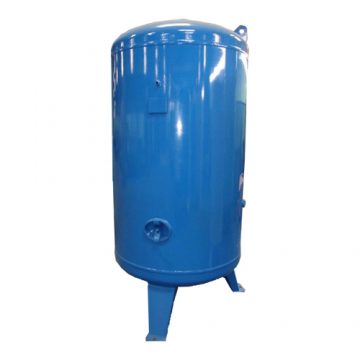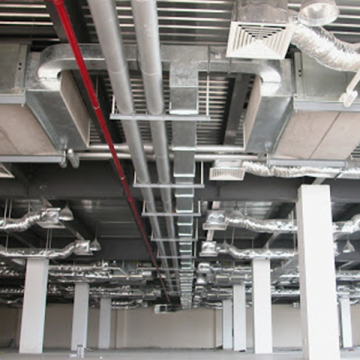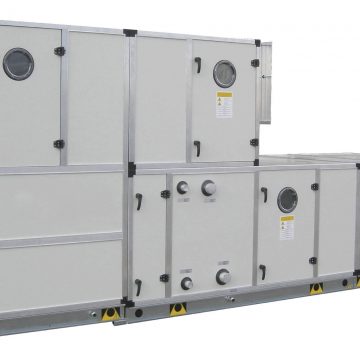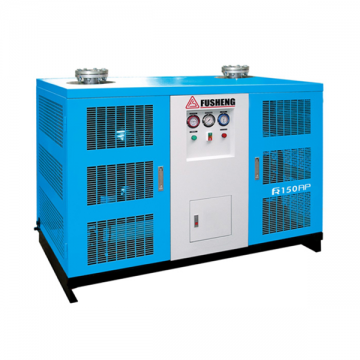Compressed air is air kept under a pressure that is greater than atmospheric pressure. Compressed air is an important medium for transfer of energy in industrial processes. Compressed air is used for power tools such as air hammers, drills, wrenches and others. Compressed air is used to atomize paint, to operate air cylinders for automation, and can also be used to propel vehicles. Brakes applied by compressed air made large railway trains safer and more efficient to operate. by the way, Compressed air is used as a breathing gas by underwater divers. It may be carried by the diver in a high pressure diving cylinder, or supplied from the surface at lower pressure through an air line or diver’s umbilical.[1] Similar arrangements are used in breathing apparatus used by firefighters, mine rescue workers and industrial workers in hazardous atmospheres.
An air compressor is a device that converts power (using an electric motor, diesel or gasoline engine, etc.) into potential energy stored in pressurized air (i.e., compressed air). By one of several methods, an air compressor forces more and more air into a storage tank, increasing the pressure. When tank pressure reaches its engineered upper limit the air compressor shuts off. The compressed air, then, is held in the tank until called into use.[1] The energy contained in the compressed air can be used for a variety of applications, utilizing the kinetic energy of the air as it is released and the tank depressurizes. When tank pressure reaches its lower limit, the air compressor turns on again and re-pressurizes the tank. An air compressor must be differentiated from
Piston Air compressor: air compressors use this principle by pumping air into an air chamber through the use of the constant motion of pistons. They use one-way valves to guide air into and out of a chamber whose base consists of a moving piston. When the piston is on its down stroke, it draws air into the chamber. When it is on its up stroke, the charge of air is forced out and into a storage tank. Piston compressors generally fall into two basic categories, single-stage and two-stage. Single stage compressors usually fall into the fractional through 5 horsepower range. Two-stage compressors normally fall into the 5 through 30 horsepower range. Two-stage compressors provide greater efficiency than their single-stage counterparts.
Rotary-screw compressor: A rotary-screw compressor is a type of gas compressor, such as an air compressor, that uses a rotary-type positive-displacement mechanism. The gas compression process of a rotary screw is a continuous sweeping motion.They are commonly used to replace piston compressors where large volumes of high-pressure air are needed, either for large industrial applications.
Rotary-screw compressors use two meshing helical screws, known as rotors, to compress the gas. In a dry-running rotary-screw compressor, timing gears ensure that the male and female rotors maintain precise alignment. In an oil-flooded rotary-screw compressor, lubricating oil bridges the space between the rotors, both providing a hydraulic seal and transferring mechanical energy between the driving and driven rotor. Gas enters at the suction side and moves through the threads as the screws rotate. The meshing rotors force the gas through the compressor, and the gas exits at the end of the screws.
The effectiveness of this mechanism is dependent on precisely fitting clearances between the helical rotors and between the rotors and the chamber for sealing of the compression cavities. And high rotational speeds must be used to minimize the ratio of leakage flow rate over effective flow rate. Screw compressors are made with different profiles on the two rotors: the male rotor has convex lobes which mesh with the concave cavities of the female rotor. Usually the male rotor has fewer lobes than the female rotor, so that it rotates faster.
The capacities of rotary-screw compressors are typically rated in Kilowatt (KW), horsepower (HP), Capacity (m3/min) and pressure (Bar/kgf/cm3/PSI.). Rotary-screw compressors are commonly available in the 5 through 500 HP range and can produce air flows in excess of 2500 m3/h. While there are high pressure rotary-screw compressors, within the compressed air community, the upper pressure limit is generally around 8.5kgf/cm2.
Rotary-screw compressors tend to be smooth running with limited vibration, thus not requiring a specialized foundation or mounting system. Normally, rotary-screw compressors are mounted using standard rubber isolation mounts designed to absorb high-frequency vibrations. This is especially true in rotary-screw compressors that operate at high rotational speeds.
Rotary-screw compressors are generally used to supply compressed air for larger industrial applications. They are best applied in applications that have a continuous air demand such. In addition to fixed units, rotary-screw compressors are commonly mounted on tow-behind trailers and powered with small diesel engines. These portable compression systems are typically referred to as construction compressors. Construction compressors are used to provide compressed air to jack hammers, riveting tools, pneumatic pumps, sand blasting operations and industrial paint systems. They are commonly seen at construction sites and on duty with road repair crews throughout the world.
Oil-free screw air compressor
In an oil-free compressor, the air is compressed entirely through the action of the screws, without the assistance of an oil seal. They usually have lower maximal discharge pressure capability as a result. However, multi-stage oil-free compressors, where the air is compressed by several sets of screws, can achieve pressures of over 150 psi (10 atm) and output volume of over 2,000 cubic feet per minute (57 m3/min).
Oil-free compressors are used in applications where entrained oil carry-over is not acceptable, such as medical research and semiconductor, food manufacturing. However, this does not preclude the need for filtration and air dryer, as hydrocarbons and other contaminants ingested from the ambient air must also be removed prior to the point of use. Consequently, air treatment identical to that used for an oil-flooded screw compressor is frequently still required to ensure a given quality of compressed air.
Oil-injected screw air compressor
In an oil-injected rotary-screw compressor, oil is injected into the compression cavities to aid sealing and provide cooling sink for the air charge. The oil is separated from the discharge stream, then cooled, filtered and recycled. The oil captures non-polar particulates from the incoming air, effectively reducing the particle loading of compressed-air particulate filtration. It is usual for some entrained compressor oil to carry over into the compressed-air stream downstream of the compressor. In many applications, this is rectified by coalescer/filter vessels. In other applications, this is rectified by the use of receiver tanks that reduce the local velocity of compressed air, allowing oil to condense and drop out of the air stream to be removed from the compressed-air system by condensate-management equipment.
Oil-injected rotary-screw compressors are used in applications that tolerate a low level of oil contamination, such as pneumatic tool operation, crack sealing, and mobile tire service





